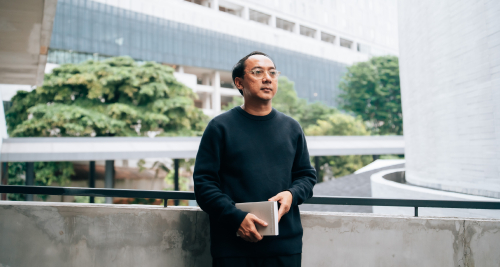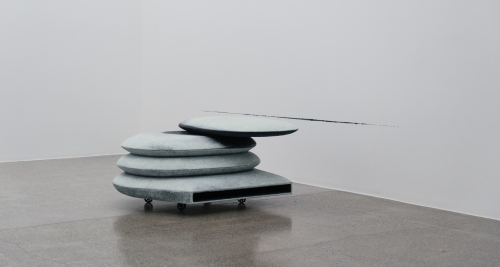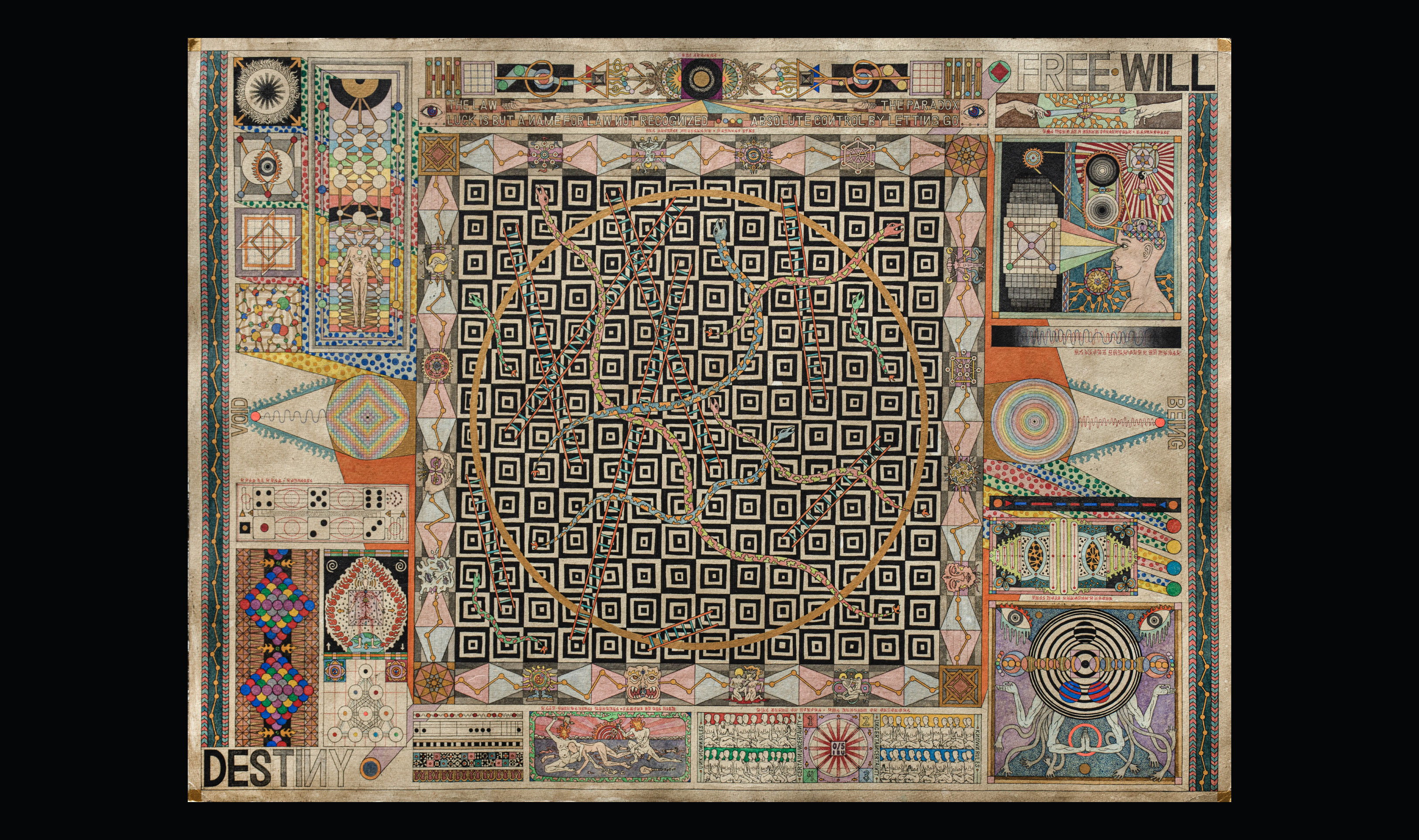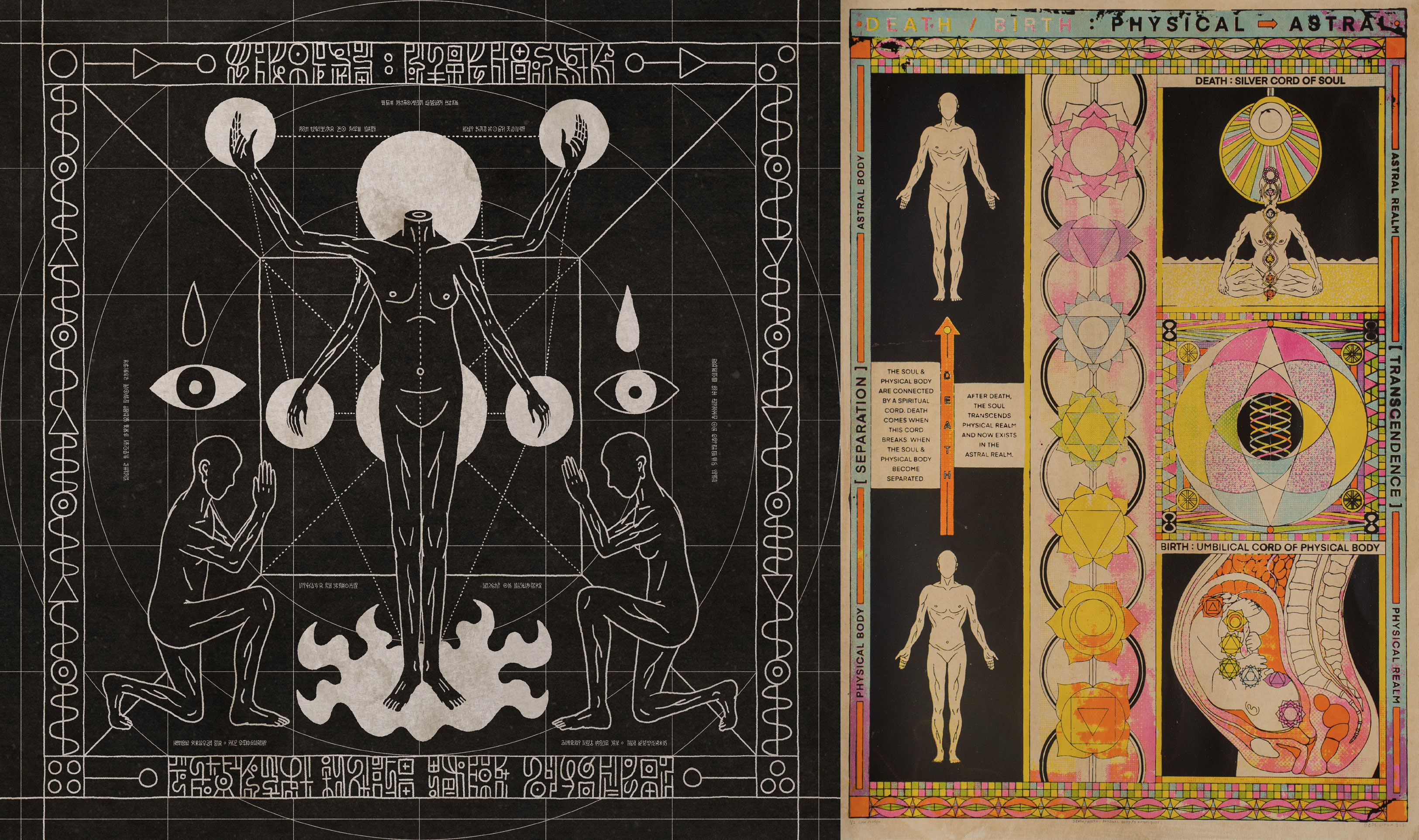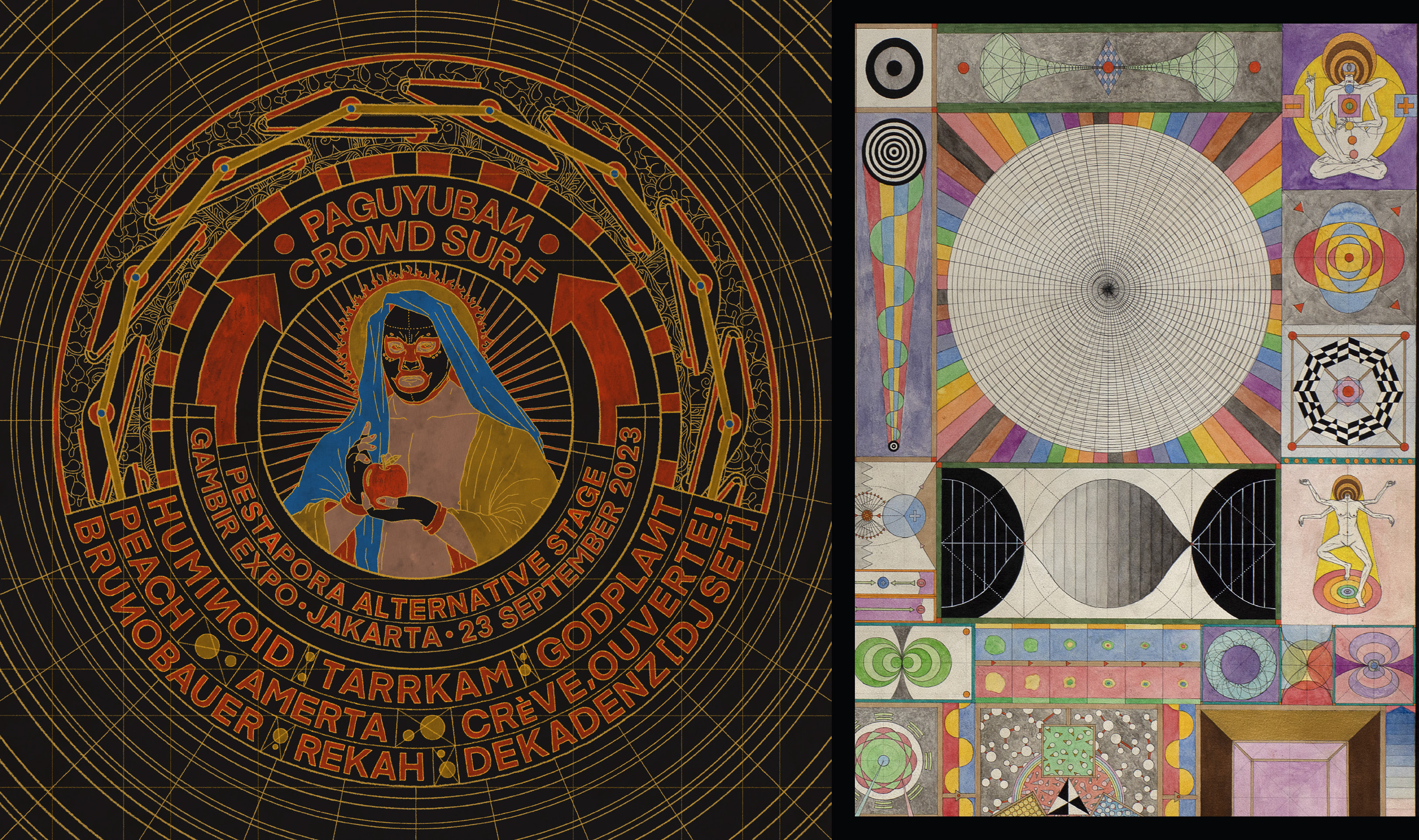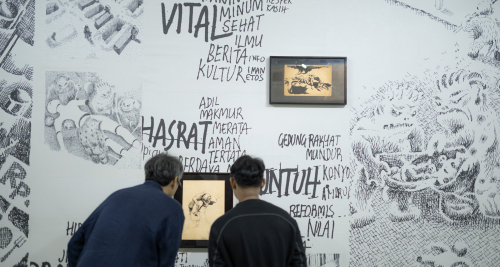The Many Geometric Patterns and Shapes of Dede Cipon
Dede Cipon’s interest and eagerness to continue his studies in art school seemed to be serious. Being rejected twice by the Indonesian Institute of Art Yogyakarta did not break his spirit. He was fiunbally accepted in his third attempt, although it was for a different major. “Initially I didn’t really want to major in Graphic [Art]. I didn’t even know what Graphic [Art] was. I wanted to major in Painting, but I wasn’t accepted. Eventually, I ended up being accepted into the Graphic [Art] major. During the [test] interview, I was asked, ‘If you don’t get accepted into Painting, would you accept joining the Graphic Arts program?’ Well, I accepted because it’s still studying at university but I ended up really suiting the major,” Cipon said.
Armed with his love of drawing dating back to his childhood, Cipon himself didn’t know much of the arts when he moved to Yogyakarta from his hometown, Balikpapan. “I only really got to know the arts when I lived in Jogja,” Cipon remarked. “Luckily I had the privilege of not being overly pushed academically, all that mattered to my parents was that I attended school, I mean I was free to choose what I wanted to be, as long as I studied hard,“ Cipon said, elaborating his parents’ response to move to Yogyakarta and pursue education in the arts.

The Graphic Art major ended up heavily impacting Cipon’s creative practice. Not only in terms of his final outcomes but also in the context of his work patterns. “I was more influenced in terms of techniques. Not that I would only use [graphical] techniques, but more so in a technical sense. It’s a little difficult to articulate. If I compare it to when I paint, to me painting feels more direct. Meanwhile, when I studied Graphic [Art], there were many steps in their techniques to be done and cannot be done away with. The divide is much clearer. We were trained to analyze and be much more thorough.” In creating artworks, that sense is present in the stages of Cipon’s creative process.
Geometric patterns and shapes are a visual style that is now inherent in Cipon's work. For Cipon, the use of geometric shapes is often used as a language to describe abstract things, for example in temple buildings and physics diagrams. This visual approach is actually an excavation of his interests in the past. After gaining many novelties he found in Yogyakarta, he was called back by experiences and familiar things from when he still lived in Balikpapan.
He recalled how he grew up with his father's closeness to Ma’rifa practices and his curiosity of mystical things and traditions. For Cipon, his interest in mystical things was initially aimed at self-development. In the sense that all the wisdom and outlook on life conveyed through various advice and stories can help him through life.
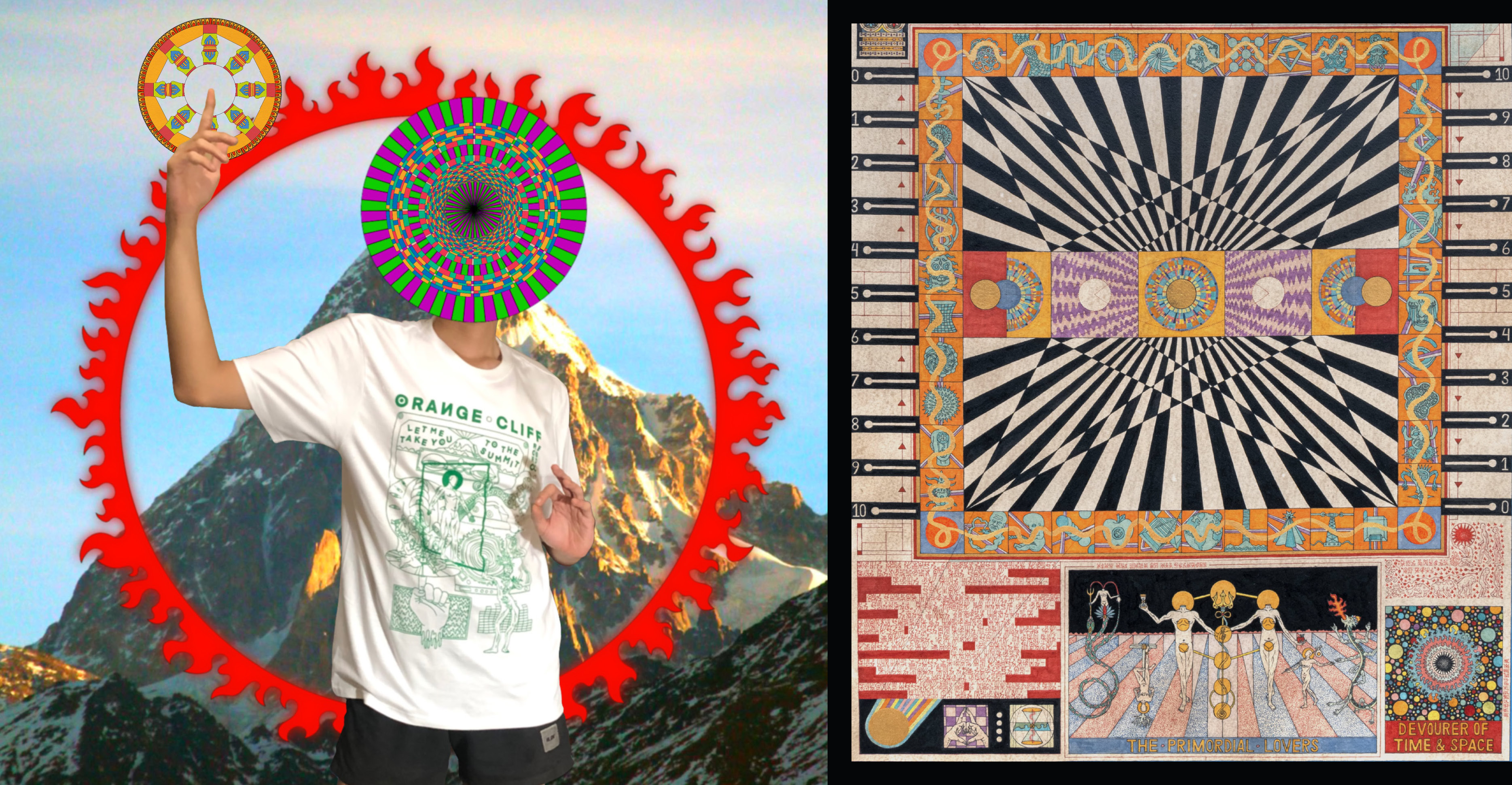
Not limited to his visual style, mysticism has also impacted the themes in Cipon’s artworks. “For as long as I could remember, today’s science was considered mystical long ago. For example, solar eclipses were explained as a dragon eating the sun. Now, we’re able to explain its natural process. I feel that what we consider mystical now is simply a natural order that we have yet to understand.”
Aside from creating works for his personal projects, Cipon also often accepted commissions for musical groups. Voice of Baceprot and Sigmun are two of the many musical groups that have used his artwork. He has been doing projects like this since his university days. Cipon said that the patterns and approaches used in his work were the same as his practice in fine arts. "When I'm working for a band like that, I usually ask them to tell me the story [behind the music] first. Or if they don't want to or can't, I try to convey my interpretation. Or I ask, 'Describe your song in three words.' From there, I’m then able to create the visuals." Cipon said. “My personal creative process is also like that. The only difference is that the client is me. Drawing to me is capturing thoughts and feelings.”
Even though his work will be transferred to other media, Cipon does not always create his work in digital form when working on commission projects. "Going back to the music or band, what nuances are suitable for it? If there's a song that feels like it's from Babylonian times using digital [media] doesn't feel right. So I end up using manual methods. The effects are more natural, like Babylonian stone tablets that have been destroyed by time. It's not controlled," explained Cipon.
For Cipon, living and working in Yogyakarta has helped him grow as an artist. With the ecosystem and network that has been formed, he is able to continue developing and learning many new things. The environment and people in Yogyakarta always trigger him to think critically and with fresh eyes. In the past year, Cipon decided to join a fine art gallery in Yogyakarta. According to him, he himself still needs to work his way up and explore and map out his career path in the world of fine arts.






